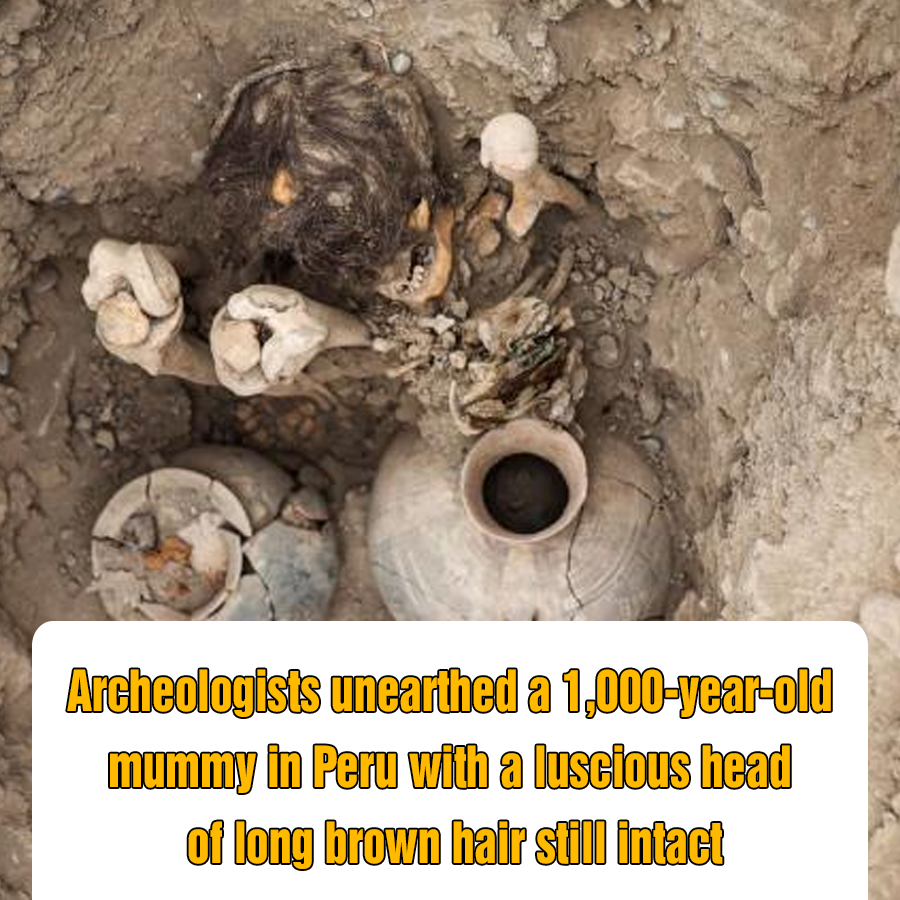Archaeologists have discovered an ancient mummy with a head full of hair buried in a cemetery in Peru’s capital city of Lima.
The remains were found at the Huaca Pucllana archeological site in the wealthy Miraflores neighborhood, the dig’s head archeologist Mirella Ganoza told Reuters this week.
The ruins are believed to have been a cemetery once used by the Ychsma people who are credited with building at least 16 pyramids along the central coast of modern-day Peru, before the Incas arrived in the region, according to The Washington Post.
A worker uncovers a mummy belonging to the pre-Inca Ychsma culture buried in a shallow funeral chamber. Photo by CRIS BOURONCLE/AFP via Getty Images
The mummy most recently discovered at the site could have lived as long as 1,000 years ago, Ganoza said.
“This is an adult individual in a sitting position with bent legs,” she told Reuters.
The body still had a thick head of long brown hair and a jaw that was almost entirely intact, the outlet reported. Researchers are not certain yet of the individual’s gender, La Republica reported, per The Post.
The remains were buried alongside ceramic vessels and textiles representative of the residential Huaca Pucllana site which dates back to around 500 AD. Multiple other mummies and ancient discoveries have previously been unearthed there.
A general view of Huaca Pucllana, an archaeological site in a residential neighbourhood where the remains of a 1,000-year-old mummy were discovered, in Lima, Peru, September 6, 2023. REUTERS/Sebastian Castaneda
“I find it quite interesting that right in the heart of Miraflores, in the middle of the city, surrounded by modern buildings and constructions, an important site is still preserved, the Huaca Pucllana ceremonial center,” Ganoza told Reuters.
There are approximately 400 huacas, or archeological sites, scattered throughout Lima, the outlet reported.
In June, archeologists discovered a 3,000-year-old mummy under heaps of trash in Lima. Researchers said the mummy was a likely sacrifice of the Manchay people, who lived in modern-day Lima from 1500 BC to 1000 BC.
And in March, Peruvian police found an ancient mummy believed to be 600 to 800 years old when they searched a drunken man’s cooler bag while he and his friends were at an archeological city in Puno.






